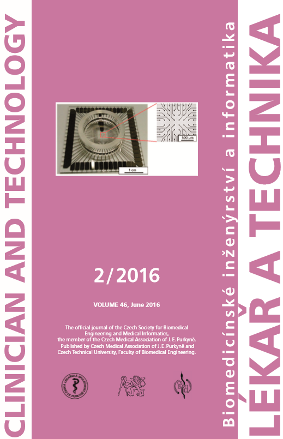CELL-BASED SENSOR CHIP FOR NEUROTOXICITY MEASUREMENTS IN DRINKING WATER
Keywords:
microelectrode array, carbamazepine, neurotoxicity, cell-based biosensorAbstract
Our drinking water contains residues of pharmaceuticals. A sub-group of these contaminants are neuro-active substances, the antiepileptic carbamazepine being one of the most relevant. For assessment of the neurotoxicity of this drug at a sub-therapeutic level, a cell-based sensor chip platform has been realized and characterized. For this purpose, a microelectrode array chip was designed and processed in a clean room and optimized in terms of low processing costs and good recording properties. For characterization of the system neuronal cells were plated on microelectrode array chips and electrical activity was measured as a function of applied carbamazepine concentration. We found that the relative spike rate decreased with increasing drug concentration resulted in IC50 values of around 36 μM. This value is five orders of magnitude higher than the maximal dose found in drinking water. IC50 values for burst rate, burst duration and synchrony were slightly higher, suggesting spike rate being a more sensitive parameter to carbamazepine.
Downloads
Published
Issue
Section
License
Copyright (c) 2017 Dennis Flachs, Manuel Ciba

This work is licensed under a Creative Commons Attribution 4.0 International License.
Authors who publish with this journal agree to the following terms:
- Authors retain copyright and grant the journal right of the first publication with the work simultaneously licensed under a Creative Commons Attribution License (https://creativecommons.org/licenses/by/4.0/) that allows others to share the work with an acknowledgment of the work's authorship and initial publication in CTJ.
- Authors are able to enter into separate, additional contractual arrangements for the non-exclusive distribution of the journal’s published version of the work (e.g., post it to an institutional repository or publish it in a book), with an acknowledgment of its initial publication in this journal.
- Authors are permitted and encouraged to post their work online (e.g., in institutional repositories or on their website or ResearchGate) prior to and during the submission process, as it can lead to productive exchanges.
CTJ requires that all of the content of the manuscript has been created by its respective authors or that permission to use a copyrighted material has been obtained by the authors before submitting the manuscript to CTJ. CTJ requires that authors have not used any copyrighted material illegally, as for example a picture from another journal or book, a photo, etc. It is the author’s responsibility to use only materials not violating the copyright law. When in doubt, CTJ may ask the authors to supply the pertinent permission or agreement about the use of a copyrighted material.
The opinions expressed in CTJ articles are those of authors and do not necessarily reflect the views of the publishers or the Czech Society for Biomedical Engineering and Medical Informatics.


